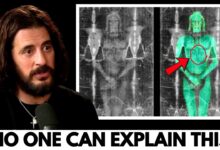Roanoke Colony Disappearance Finally Solved in 2025
The mystery of the lost colony of Roanoke has intrigued people for over 400 years, offering a historical puzzle that still baffles experts today. In 1587, 115 English settlers, led by John White, established a colony on Roanoke Island, in present-day North Carolina, with the goal of creating a permanent English presence in the New World. However, when White returned to the colony in 1590, after a three-year absence in England to gather supplies, he found the settlement entirely abandoned. There were no signs of struggle or conflict, and no bodies were found. The only clue left behind was the word “Croatoan” carved into a post and the letters “CRO” etched on a nearby tree. This word referred to an island south of Roanoke and was believed to be the name of a local Native American tribe, the Croatans, with whom the colonists had previously established friendly relations.
For centuries, historians have proposed several theories about what happened to the colonists. Some suggested that they were killed by hostile Native American tribes, others believed they succumbed to disease or starvation. Another theory posited that they might have relocated to a different area, possibly near the Chesapeake Bay, or even traveled to the interior of the continent.
In recent decades, new archaeological discoveries have offered more concrete clues that challenge the traditional explanations. Excavations in areas once inhabited by the Croatans have revealed a range of artifacts that suggest a significant interaction between the English settlers and the native tribe. English pottery, copper jewelry, and tools have been uncovered, along with evidence of European-style metalworking techniques, which would have been unusual for the Croatans to possess without outside influence. These findings suggest that the lost colonists did not simply disappear but likely integrated with the Croatan people, either through assimilation or by joining their community.
Additionally, genetic studies have shown that some descendants of the Croatan tribe carry European ancestry, which further supports the idea that the settlers may have merged with the Native American population. These genetic markers suggest that the lost colonists may have lived on in the generations of the Croatan people, their stories and heritage slowly blending into the native culture over time.
This new perspective on the fate of the Roanoke settlers shifts the narrative from one of tragedy and disappearance to a more complex story of survival, adaptation, and cultural exchange. It suggests that rather than perishing, the colonists found a way to endure and thrive in the harsh conditions of the New World, becoming part of the fabric of the indigenous culture rather than remaining isolated or wiped out. The mystery of Roanoke, once a tale of unanswered questions, now seems to be unfolding into a narrative of cultural fusion, offering new insights into the early history of European settlement in North America. As more evidence continues to surface, the lost colony may not remain lost after all, with its legacy living on in the descendants of both the settlers and the Croatans.




